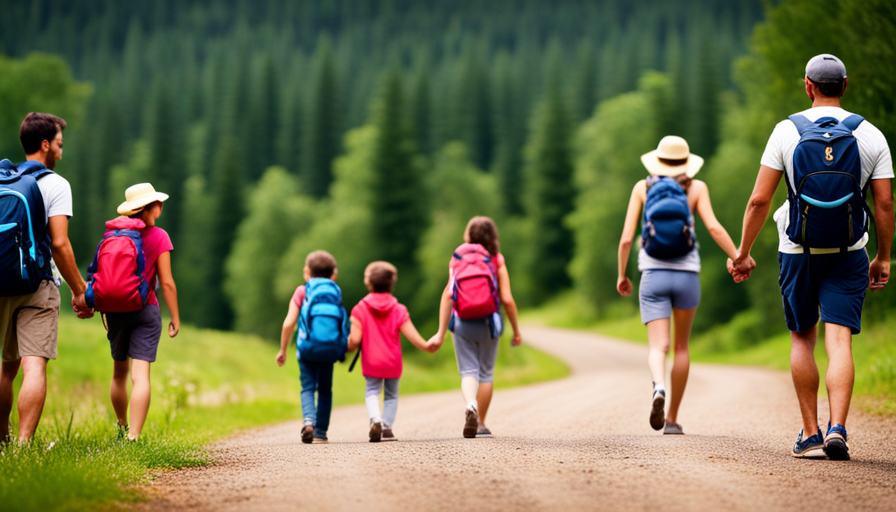Hiking with kids and toddlers can be a rewarding experience for families who enjoy outdoor activities. However, it requires careful planning and preparation to ensure that everyone is safe and comfortable during the adventure. With the right gear and knowledge, hiking with children can provide opportunities for learning and bonding, while also promoting physical fitness and appreciation of nature.
In this article, we will provide 24 tips for hiking with kids and toddlers, focusing on how to plan and pack for the adventure. We will cover essential items to bring, safety and health considerations, and ways to make the hike memorable for everyone involved.
Whether you are a seasoned hiker or a beginner, these tips will help you and your family to enjoy the great outdoors while staying safe and comfortable.
Hiking Gear Checklist
While many may think that hiking with kids requires minimal gear, the author’s checklist of hiking gear proves otherwise. The list includes bug spray and a first aid kit, which are essential items for any outdoor adventure. Trekking poles, on the other hand, may not seem necessary, but they can provide extra stability and support, especially when hiking on uneven terrain. Additionally, the inclusion of a plant and bird book can add an educational aspect to the hike, allowing children to learn about the flora and fauna in their surroundings.
Other important items to consider packing for hiking with kids include snacks, a camera, and a flashlight or headlamp. Snacks are crucial for keeping children fueled and energized throughout the hike, while a camera can capture memorable moments and create a fun activity for kids. A flashlight or headlamp is also necessary in case the hike extends into the evening or if inclement weather causes the sky to darken prematurely.
By packing these essential items, parents can ensure a safe and enjoyable hiking experience for the entire family.
Safety and Health Tips
Emphasizing the importance of teaching basic trail rules and safety skills, as well as prioritizing hydration and sun protection for children, can help ensure a safe and enjoyable hiking experience with young ones.
Children should be taught to stay on the trail, avoid running, and to be aware of their surroundings.
Hiking with toddlers requires extra precautions, such as bringing a baby carrier or stroller, and keeping a close eye on them at all times.
Additionally, it is important to educate children about potential dangers such as wildlife encounters, steep drops, and slippery rocks.
Hydration and sun protection are also crucial for a successful hike with kids.
Children are more susceptible to dehydration and heat exhaustion, especially in hot weather or at high altitudes.
Parents should encourage frequent water breaks, and carry plenty of water and snacks to keep children fueled and hydrated.
Sunscreen, hats, and sunglasses are also essential for protecting children from harmful UV rays.
With proper planning and preparation, parents can ensure a safe and enjoyable hiking experience for their kids, while also teaching them valuable skills and fostering a love of the outdoors.
Making the Hike Memorable
To fully immerse children in the natural world during a hike, parents can encourage them to slow down and engage with their surroundings, allowing for a deeper appreciation of the beauty and wonder of nature. One way to do this is to make the hike an educational experience. Parents can point out unique rocks, plants, and animals, and discuss their characteristics and habitats. This will not only keep children engaged, but also foster a sense of curiosity and appreciation for the natural world.
Another way to make the hike memorable is to plan fun activities along the way. Parents can pack a picnic lunch and stop at a scenic spot to enjoy the view and spend time together as a family. They can also bring along a camera and encourage children to take pictures of their favorite sights.
By incorporating these activities, parents can create a positive and enjoyable experience for their children, making them eager to go on more hikes in the future.

